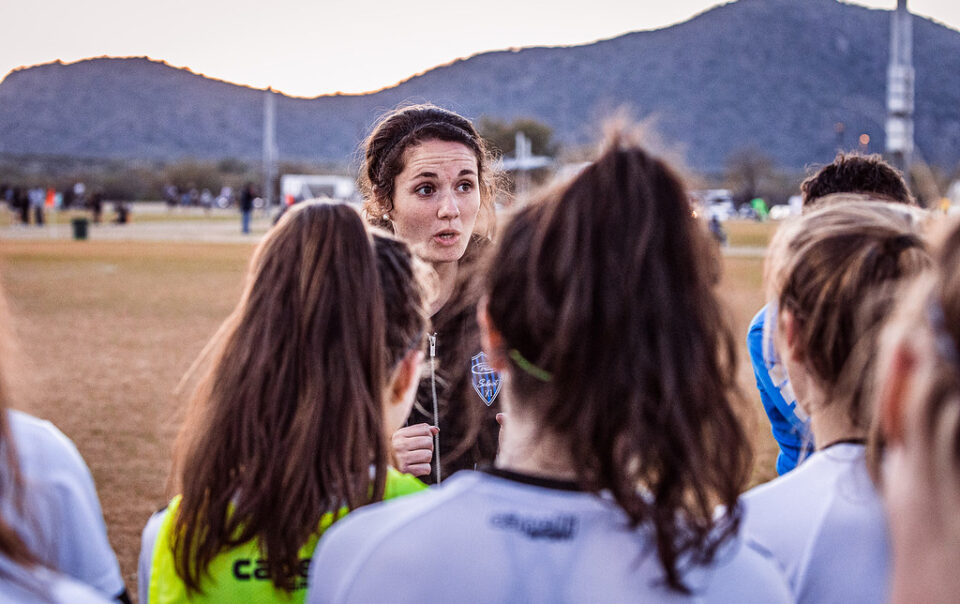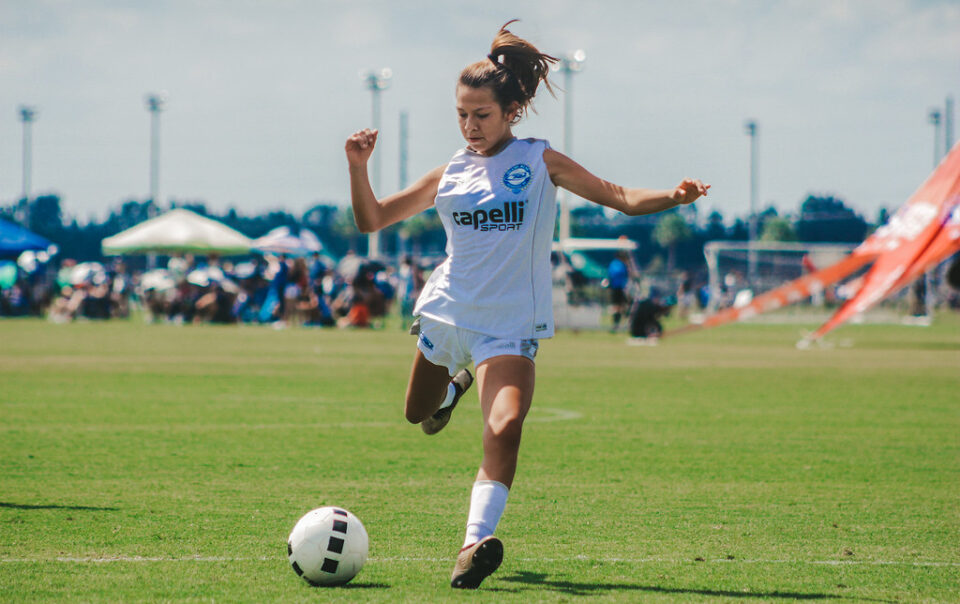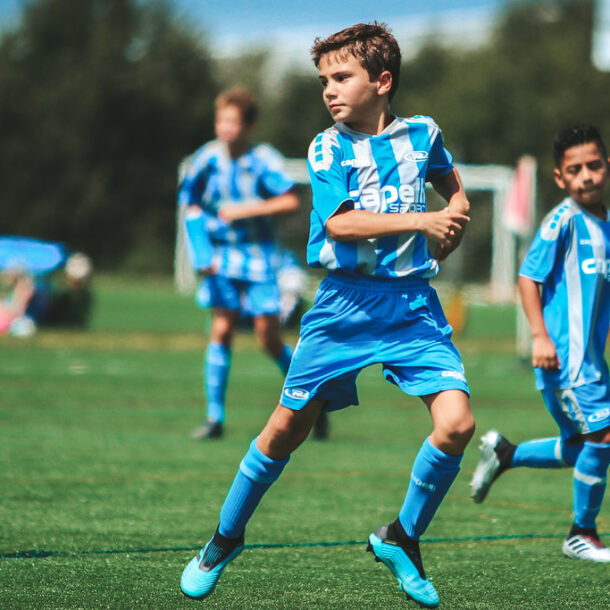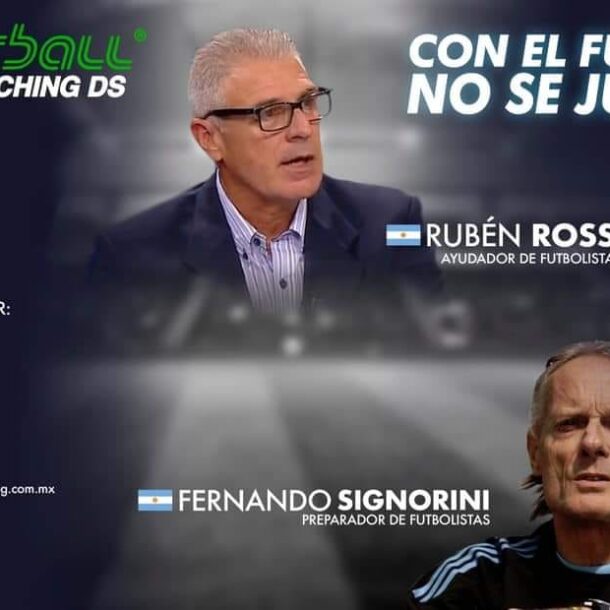
*Clicca qui per trovare la versione italiana di questo documento – The Rush Way Micro Division (ITALIA)
*Clique aqui para ver a versão em português deste documento – The Rush Way Micro Division (PORTUGUESE)
THE RUSH WAY AGE GROUP GUIDES
The Rush Way Age Group Guides provide a more in depth look at Rush Soccer’s Developmental Blueprint, covering technical, tactical, physical, and psychosocial considerations, as well as guiding on how to apply Rush Way philosophies effectively to each age group.
LA FILOSOFÍA THE RUSH WAY
El Rush way es la personificación de todo lo que es Rush Soccer; las reglas y modos en como los miembros de Rush se comportan y como esperan que los otros miembros de Rush se comporten. Esto no es inherente a todas las personas, pero puede ser aprendido. El modo Rush destila pasión, liderazgo, respeto y sobre todo, calidad. Antes de leer este documento y de forma complementaria a cualquier curriculum por edades, todos los entrenadores deberían leer completamente la filosofía del Rush Way.
Valores Centrales: There are 11 players on the field and so Rush Soccer has 11 core values as well. The four highlighted are considered the main ones for these age groups.
- Responsabilidad
- Consejo
- Empatía
- Humildad
- Disfrute
- Liderazgo
- Pasión
- Respeto
- Seguridad
- Tenacidad
- Unidad
Posición de los Jugadores/as: Rush cree que todos los jugadores menores de 14 años deberían tener la oportunidad de jugar en todas las posiciones de campo. Los jugadores no deberían ser estereotipados en una posición específica debido a la velocidad, tamaño u otras cualidades, pero deberían experimentar la emoción y funcionamiento de todas las posiciones del campo. Estas experiencias permiten mejorar su conocimiento futbolístico, aumentar sus habilidades técnicas y les da la oportunidad de pensar como jugadores de campo, las cuales en su conjunto, incrementan el nivel de sus posiciones-exigencias específicas.
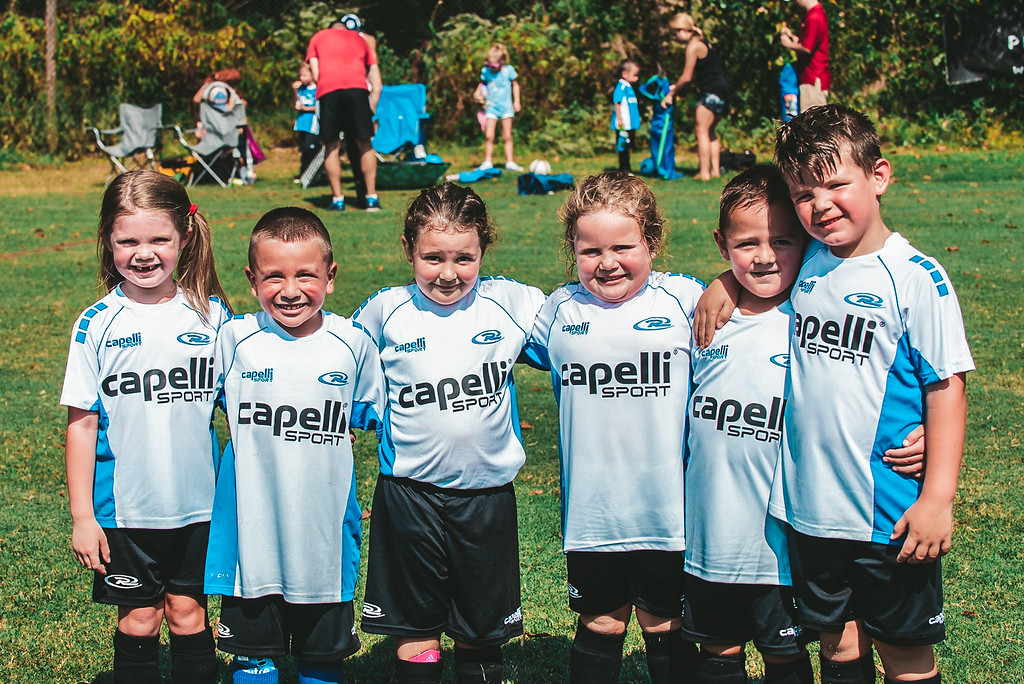
70 Games & Playing Time: Playing time for any individual is completely at the coach’s discretion. Rush encourages that playing time at all levels should be equal throughout the season. At the younger developmental ages, players should be exposed to as much of the game as possible. Limiting team roster size will aid in increased playing time for all players. Remember the spirit of the 70 Games Philosophy stated at The Heart Of The Rush: One of the main objectives of a Rush club must be to provide opportunities and environments for the players to elevate the overall number of playing hours as much as possible.
Sustituciones:: Regardless of the state of the game, all players should come off the field and exchange courtesy with their replacement (when possible). This will promote team spirit and give confidence to the players entering the field.
Pre partido/ Rutinas del calentamiento: Para esta edad el Rush Way sugiere usar el calentamiento como una oportunidad para revisar los conceptos entrenados durante la semana a través de una actividad breve. Termina el calentamiento con una actividad divertida y que capte la atención de los jugadores. Promueve el entusiasmo por jugar a futbol y recuerda que a esta edad los niños no necesitan ningún tipo de calentamiento desde un punto de vista fisiológico no son necesarios, como por ejemplo los estiramientos.
Durante el partido: Games are a great coaching opportunity, but caution, don’t over do it. Make sure your coaching is positive and builds confidence, like stated in the Rush Blue Thread, and make most of your comments when off the ball and preferably in natural stoppages.
Medio tiempo: Rush encourages players to analyze problems and discuss solutions on their own before coach intervention. Players should be given a couple of minutes away from the coaching staff to voice opinions and discuss solutions. The coach should then bring their views and knowledge to the group. The Rush Way expects our comments to apply the 4:1 positive to instructional coaching method. Once again, understand the 4:1 ratio as a tool to coach positively, not as a unbreakable rule. Don’t over-coach in this period, remember that kids’ span of attention is limited and they don’t understand abstract concepts at this age, so focus on the motivational aspects and the enjoyment of playing.
Post Partido: Once again, the Rush Way is to coach positively, encourage players, and build confidence. In this age group, stay very positive independently of results and always highlighting the enjoyment of playing the sport.
Saludos: se espera que los jugadores saluden siempre al cuerpo técnico, tanto a nivel nacional como internacional, dándoles la mano. Los cuerpos técnicos a lo largo del país esperan que sus jugadores les den la mano siempre que se vean. ¿Por qué?... respeto, construir habilidades sociales, eliminar barreras, aprender comportamientos aceptados culturalmente, la lista es infinita.
Comportamiento del entrenador/a desde afuera: From the outside, the conduct of the coach on the sideline can be perceived as a reflection of the conduct of all coaches within Rush Soccer. Coaches are a reflection of their players and should conduct themselves with respect for the officials, the opponents and the game of soccer. Remain positive when at all possible but motivational throughout. Coach actively but don’t misunderstand that with constant narrating and interventions. Actively means engaged. Education and being a first class role model are the paramount reasons that a coach has been given the honor to coach for Rush. It is always important to remember this.
Comportamiento de padres y madres desde afuera: se espera que los padres y madres de jugadores/as de Rush sean positivos, motivadores y comprensivos con todos los jugadores y árbitros en todos los partidos. Se espera que los padres y madres no den instrucciones desde fuera del campo pero que disfruten de la experiencia de ver un partido.
Comportamiento de los Jugadores/as desde afuera:Se recomienda a los jugadores que apoyen a otro equipos de Rush y les den todo su apoyo. Que se aprendan el himno de Rush; que lo canten tan alto como puedan pero siempre siendo respetuoso y ayuden a educar al resto del país en la manera en la que el fútbol debe ser apoyado, así como en el resto del mundo.
Gestión de los Riesgos: aceptar una posición de entrenador significa aceptar responsabilidades. Ejercer unos primeros auxilios, tener un botiquín y tener el curso de reanimación cardiaca. También asegurarse que cada niño es recogido por sus padres o por la persona designada para tal efecto y que ningún jugador se queda solo después del entrenamiento, entre otras.
Rush Blue Thread
In Soccer as in life, most things are not black or white and common sense can’t be replaced. Exceptions aside, the Rush Blue Thread pursues the application of the following eight principles at all levels and ages. Rush Soccer has a player centered approach.
- The coach uses conditions to encourage competition.
- There is an ongoing cycle of feedback and reflection between the coach and the player.
- Each activity contains decision making elements.
- The design of the season, week, and training session meets the needs of the players and teams.
- Coaching points are based on visual cues.
- The ball is rolling at least 70% of the time in the session.
- A minimum of 75% of the session is game based and opposed.
- Coaching is positive to encourage and build confidence.
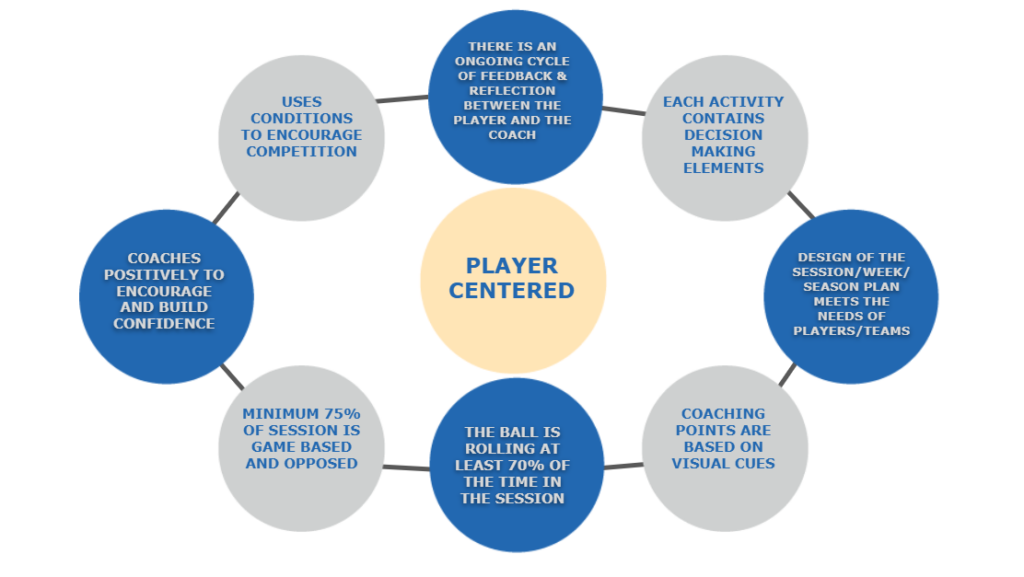
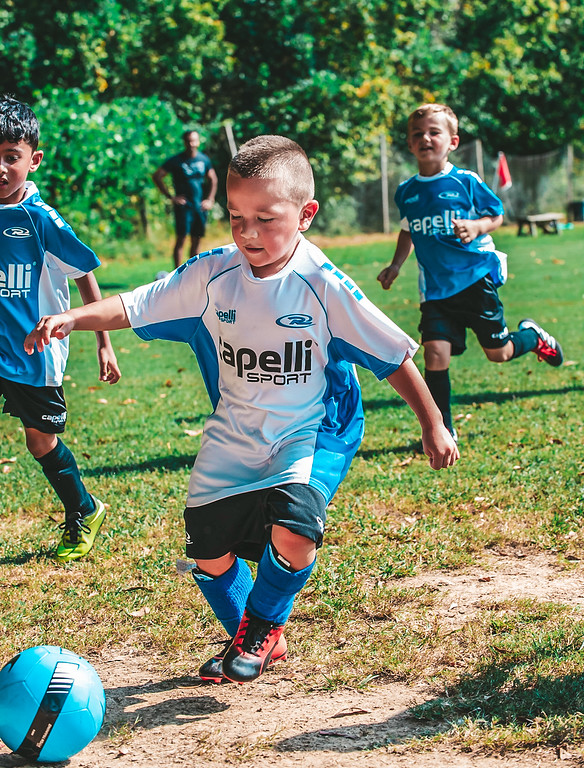
THE RUSH WAY: U6-U8 MICRO DIVISION
OBJETIVO: Develop Healthy Players With A Strong Passion For Soccer.
Enfoque del entrenamiento por edades: para este determinado grupo de edades, jugadores jóvenes, nuestro rol como entrenador es introducirles el juego del fútbol. Nuestro principal objetivo es conseguir que los jugadores entiendan como jugar un partido y sus reglas. Muchos entrenadores ayudan en exceso a los jugadores (les recogen el material, les colocan la pelota para chutar) Es trabajo del entrenador mostrar o demostrar a los jugadores como realizar esas tareas para posteriormente, dejar que los jugadores las realicen por si mismo y así implementar esas reglas del juego. Permitir a esos jugadores, que están empezando, aprender por el método de ensayo-error, usa el juego como si fuera un maestro.
All training should be structured around the technical side of the game, emphasizing fun. Even if all technical skills can be introduced along the process, we focus on dribbling. Encourage players to be creative, take chances, to dribble, and to go at opposing players. Too often coaches emphasize passing and clearing the ball. We want our players to be comfortable with the ball not clear it away every time they get the ball. Encourage players to control, dribble, and score goals.
Durante la práctica, cada jugador/a debería tener un balón. This will allow them to get much needed repetitions. That doesn’t mean that every activity should be thought out to have every player with a ball, obviously the real game is played with only one. Guard against having lines. Rule of thumb, no more than 2 players should be waiting to participate in an activity. When possible have everyone participate. Keep exercises and activities short, this will prevent the players from becoming bored and disinterested. Keep your coaching short and to the point, at this age players struggle to comprehend. Have players participate in activities and play the game.
It is extremely important to stay 4:1 on the positive (“Good job”, “well done”, “outstanding”, etc.) to instructional comments (“Dribble with the inside and outside of the foot”) through out the session. Once again, remember that the 4:1 is a tool to coach positively, not an unbreakable rule. Encourage players to enjoy the game and have fun! It is each coach’s job to create this environment.
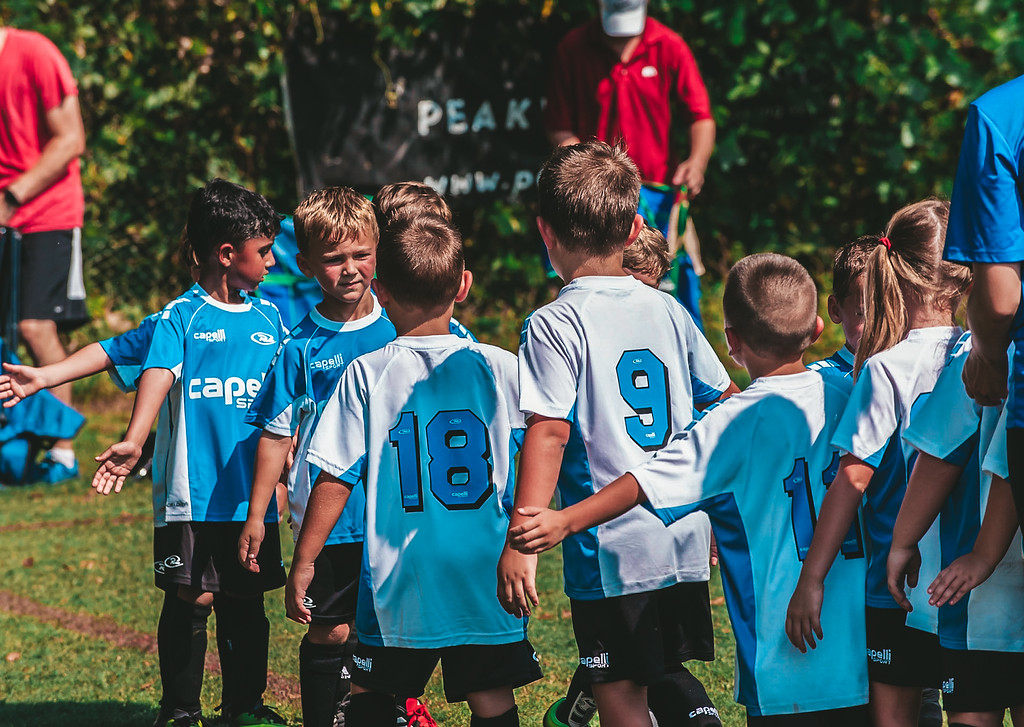
Fundamentos Psico Sociales:: When you coach a team or a player, the most important thing is always to understand who you are training. Players in this age range have very short attention span so give instructions very briefly and concisely. Their brains don’t understand abstraction. SHOW ME is a very important word for our training. In addition, they do not have the ability to collaborate with many elements: Players of this age are in a very egocentric phase. Always me and my ball.
Seguridad: It is the most important thing here, understanding it from a holistic point of view. Players have to feel safe in their environment to feel free and experiment. Pay attention to signs, such as when a player has both arms behind their back as a sign of lack of motivation or fear. Sometimes children are placed in the wrong environment that is too challenging for them. Remember, if the player does not feel safe he/she will not participate in the activity and if they do not participate they will not learn.
Metodologías de entrenamiento preferidas:: Game-based methodologies that integrate long periods of play without interruption. Play-Practice-Play is a good approach.
Aquí presentamos una Psycho-social Cheat Sheet.
- Motivación: Coach positively, build confidence, encourage. 4:1 Coaching Method
- Confianza en sí mismo/a: Recuerda que felicitar por el esfuerzo en vez del talento ayuda al jugador a desarrollar a mentalidad de crecimiento.
- Capacidad de Colaboración en Inferioridad Numérica.: Don’t expect them to pass the ball or collaborate with many elements, it’s a me and the ball stage, and that’s fine. That’s why dribbling is the focus.
- Apply The Rush Blue Thread in session design and execution.
- Pensamiento concreto: Avoid abstractions. Short and concrete. Visual, auditory, and kinesthetic (‘show me’) through demonstration.
- Respeto y Disciplina.
- DisfruteSiempre, siempre, siempre mantén un ambiente divertido. Nosotros queremos que los niños, perteneciente a estas edades desarrollen una pasión por el fútbol y que de esta pasión surjan experiencias positivas para su futuro.
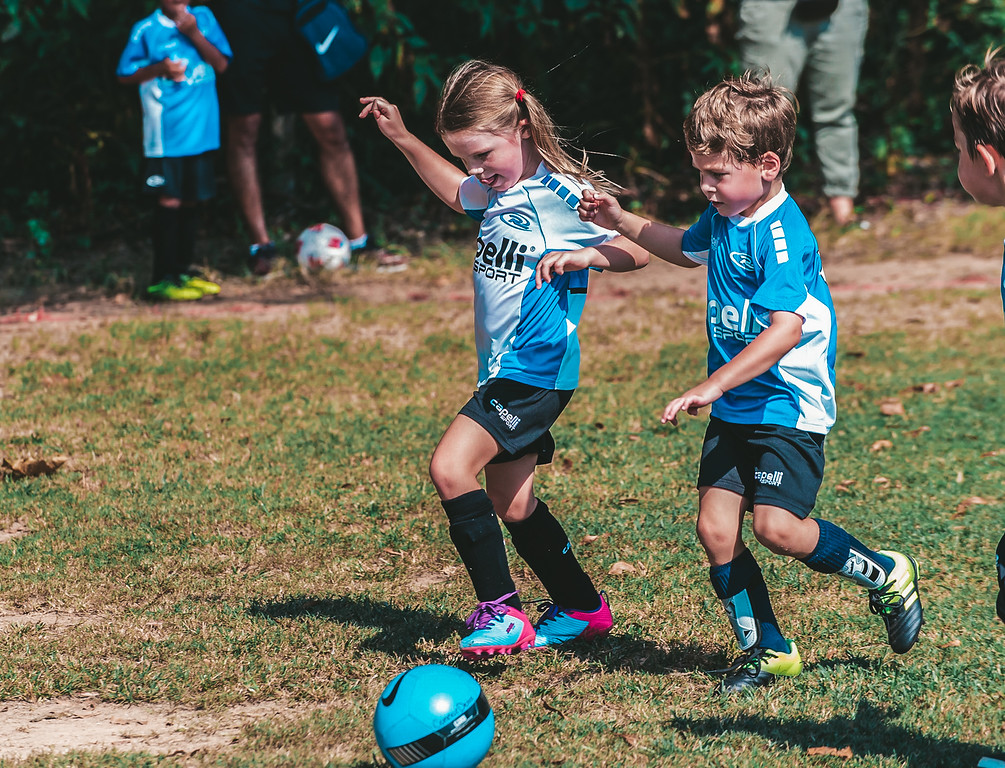
Fundamentos Físicos: Los niños/as a estas edades no tienen capacidad anaeróbica láctica, ésta es la capacidad del cuerpo para producir energía para esfuerzo de larga y alta intensidad. Por un lado, la capacidad aeróbica, al mismo tiempo, va en aumento como resultado de los cambios metabólicos que se producen por el crecimiento del niño más que por el entrenamiento. Por el otro lado, la capacidad anaeróbica aláctica del niño es buena, la cual es la que le permite hacer esfuerzos intensos de corta duración y recuperarse de éstos rápidamente.
Todo esto nos dice que deberíamos evitar exigirles a nuestro niños dar vueltas al campo de fútbol o ejercicios similares para desarrollar su capacidad aeróbica hasta que pasen la pubertad, pues su aumento depende exclusivamente del crecimiento a estas edades. Por el contrario, si se le exige ejercicios relacionados con la capacidad aeróbica, éstos pueden crear mucho estrés en el cuerpo de los niños, lo que podría resultar en un efecto negativo asociado a actividades futuras. Repeticiones de esprines de larga duración tampoco esta recomendados para estas edades. Esprines cortos son beneficiosos y los niños se recuperan rápidamente de esos esfuerzos.
Based on these facts, science recommends that we focus on the development of basic motor skills and coordinative capacities. If you can do it through soccer, it’s always better. Think of it as: Throwing and Catching are BMS’s that could be developed through goalkeeping games.
Resumen de las claves de los fundamentos físicos:
- Coordinative Capacities
- Correr, Saltar, Lanzar, Atrapar, Girar.
- NO sólo Actividades 100% Aeróbicas.
- NO sólo Actividades 100% Anaeróbicas Lácticas.
Fundamentos Técnicos: Technical development is the primary component for this age group. Once again, make an emphasis on dribbling. The others can be introduced but shouldn’t be the focus.
El entrenamiento de cabezazo empieza a los 12 años en Estados Unidos. Sin embargo, la correcta técnica de ejecución puede ser introducida con un globo o una pelota de voleibol en edades tempranas para permitir a los jugadores experimentar esta habilidad.
Fundamentos Tácticos: El hecho de que los niños a esta edad no puedan interpretar abstracción limita el rango táctico de sobremanera. No hay problema, ya habrá otras etapas donde centrarse en esto. Recuerda que la táctica tiene una base y dependencia del desarrollo psicosocial, físico y técnico, siendo ésta última, la técnica, la principal prioridad de esta etapa.
Therefore, only focus on basic principles of the game. Examples are:
- Defensa: Posicionamiento. Colocación entre la pelota y nuestro arco cuando defendemos. ¡Persigue el balón!
- Ataque: ¡Dispérsense!
Obviamente, cuando expliques estas cosas, trata de hacerlo de la manera más sencilla posible.
Actividades Recomendadas: Keep the game in small numbers, focus here on 1v1, 2v1, 1v2, 2v2, 3v2, 2v3, 3v3. Don’t go past 4v4.
Fun Games: Crab soccer, crazy box dribble, marbles, moving goals, among others, and a lot of scrimmages!
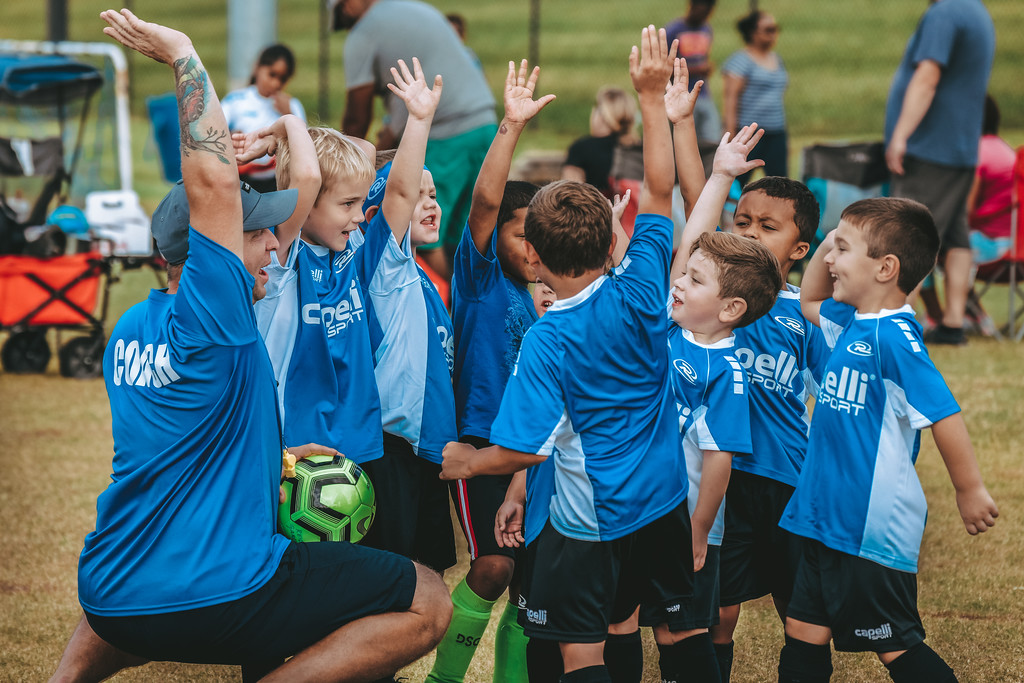
Conociendo a los Padres y Madres
Empatía es uno de los principales valores de Rush. Creemos que no hace falta mucha empatía para entender el amor de los padres por sus hijos y por su deseo de estar involucrado. Esto no significa que los padres sepan exactamente como estar involucrados. Háblales, guíalos, enséñales este currículo antes de / empezar la temporada y explícales lo que harás y porqué lo harás. Dales retroalimentación y permanece abierto a escuchar sus preocupaciones. Comparte las expectativas y usa "nosotros" mejor "yo". Padres/Madres y entrenadores se necesitan mutuamente para conseguir el objetivo general asignada a esa edad determinada: desarrollar niños/as saludablemente que se conviertan el jugadores de fútbol apasionados.






